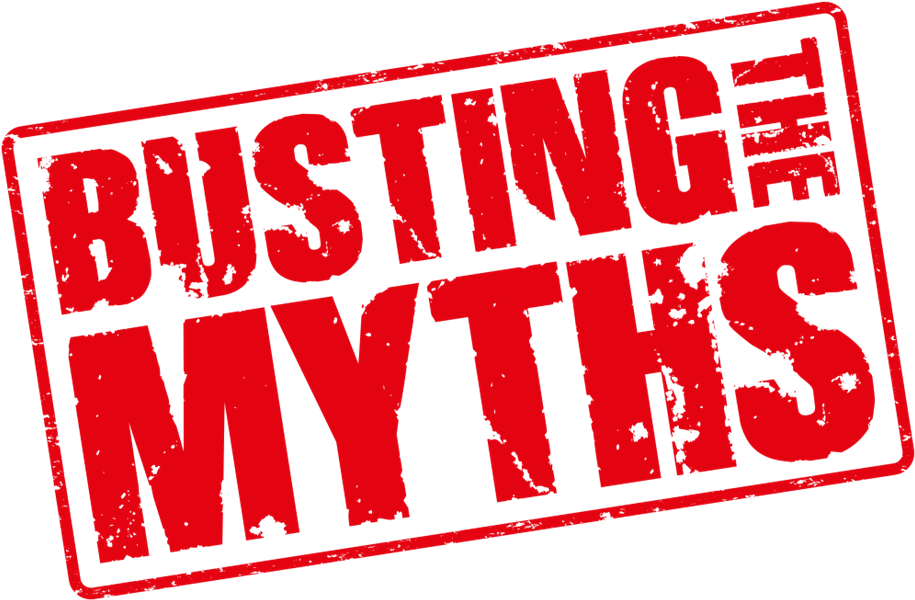Deset mitova o sindikatu - Mythbusting
10. Jun. 2021.

Deset mitova o sindikatu
- MIT: Ako napravimo sindikat, kompanija će otići iz zemlje.
REALNOST: Pretnja odlaskom je najčešća anti-sindikalna taktika koju kompanije primenjuju i zasniva se na zastrašivanju zaposlenih. Pitanje je koliko su ovakve pretnje osnovane. Da bismo razumeli zašto nisu, moramo da se zapitamo zbog čega kompanije uopšte dolaze u Srbiju. Glavni cilj svake kompanije je zarada i uvećanje profita, a mi radimo u sektoru gde je profit najviši. Sve dok u Srbiji firme mogu dobro da zarade, neće odlaziti jer ovde imaju pristup obrazovanoj radnoj snazi koja je u toku sa svetom, zna svetske jezike i relativno je jeftina. Sindikat ne služi tome da kompaniju otera, ili da ona propadne, već da mi, radnici, dobijemo fer i poštene uslove rada jer za to uvek ima prostora. Najčešće, u kompanijama koje su se zatvarale i odlazile preko noći, nisu postojali organizovani sindikati.
- MIT: Sindikat je za radnike koji rade u lošim uslovima ili na slabo plaćenim poslovima. Nama u ICT sektoru sindikat ne treba, jer zarađujemo odlično i imamo mnogo bolje uslove.
REALNOST: Svim radnicima je bolje da kolektivno pregovaraju. Ovakvu sliku o sindikatima prave kompanije, jer žele da radnici razmišljaju o sindikatu kao nečemu što je isključivo za slabo plaćene poslove. Istina je ipak nešto drugačija. Uzmimo za primer američke glumce i glumice. Oni su među najplaćenijim radnicima na svetu, pa su opet članovi sindikata (SAG-AFTRA) i redovno pregovaraju kolektivne ugovore, štrajkuju, protestuju i slično. Zašto to rade? Zato što znaju da kolektivnim pregovaranjem mogu mnogo lakše da izbore bolje plate i uslove rada. Ako mogu oni, možemo i mi.
- MIT: Sindikat je neko strano telo, to je interesna grupa.
REALNOST: Prosto rečeno, sindikat su radnici i radnice. Sindikat je demokratska organizacija zaposlenih koji se bore za svoja prava na poslu, a često i u društvu. Sindikati takođe okupljaju ljude iz šire zajednice kako bi se zajedno borili za pitanja koja su važna svim ljudima koji žive od svog rada.
- MIT: Sindikat znači da ćemo se više sukobljavati na radnom mestu, najpre sa menadžmentom.
REALNOST: Naprotiv, sindikat deluje blagotvorno na radno mesto i razvija skladnije odnose među ljudima. Kolektivni ugovor omogućava kompaniji i radnicima da kao ravnopravni sednu za sto i diskutuju o problemima kada se oni pojave. Bez sindikata, životi radnika su nestabilniji i neizvesniji zato što moraju sami da se nose sa različitim problemima, poput netransparentnosti, nepotizma i ekonomske nesigurnosti.
- MIT: Firme propadaju zbog sindikata.
REALNOST: Firme propadaju iz ekonomskih razloga – većina firmi koje se zatvore nisu sindikalizovane. Neke kompanije, međutim, žele da održe ovaj mit u životu nezakonitim pretnjama zaposlenima koji pokušavaju da organizuju sindikat time što kažu da će se kompanija ugasiti. Mnoga istraživanja pokazuju da sindikati u stvari smanjuju fluktuaciju zaposlenih i povećavaju efikasnost.
- MIT: Sindikati samo žele novac od članarina.
REALNOST: Novac koji radnici uplaćuju sindikatu na ime članarina ostaje u organizaciji i služi za funkcionisanje. Sindikati su neprofitne organizacije. Veće plate, bolje beneficije i fer, ravnopravni tretman koji radnici mogu da izbore posredstvom sindikata iznose, kada se podvuče crta, mnogo više od izdataka za članarine.. Naposletku, visinu članarine određuju sami radnici svake sindikalne organizacije/podružnice kroz demokratski proces.
- MIT: Sindikalni lideri su korumpirani i uglavnom rade za svoj interes.
REALNOST: Nema sumnje da je situacija u kojoj dojučerašnji lideri od poverenja izdaju svoje članstvo poražavajuća, bez obzira na to o kakvoj se organizaciji radi. Međutim, na svakog korumpiranog sindikalnog lidera za koga ste čuli u medijima dolazi na stotine običnih, poštenih sindikalaca čiji rad medijima nije toliko zanimljiv, pa se za njih ne zna.
- MIT: Sindikati brzo nestaju i gube na važnosti u modernim društvima.
REALNOST: U većini zemalja je članstvo sindikata stabilno, ali se uporedo s tim povećao broj radnika koji izlaze na tržište rada, pa se tako smanjivala sindikalna gustina. Paralelno sa opadanjem sindikalne gustine, opadale su i plate, kao i nivo sigurnosti radnih mesta. U SAD 16 miliona radnika i radnica je učlanjeno u neki sindikat; u Švedskoj, Belgiji i na Islandu su dve trećine zaposlenih članovi sindikata Za Srbiju nema tačnih podataka, ali se procenjuje da je oko pola miliona zaposlenih u nekom sindikatu.
- MIT: Ukoliko budem aktivan/a u sindikatu, biću “blacklistovan/a” kod svih poslodavaca i teško ću pronaći novi posao.
REALNOST: Pravo na sindikalno organizovanje, garantovano je i zaštićeno kako u domaćem tako i u međunoradnom zakonodavstvu. Osim toga, niti jedan budući poslodavac ne može dobiti niti tražiti informaciju o tome da li jeste ili ste bili član nekog sindikata. Ovaj mit je proizašao iz decenija širenja antisindikalne kampanje i puko je širenje straha. Da je ovako nešto istinito, sindikati bi do danas gotovo nestali, dok naprotiv, u našem (ICT) sektoru, rastu sindikati širom sveta.
- MIT: Sindikati uvek insistiraju da se štrajkuje, čak i kada radnici to možda neće.
REALNOST: Radnici u Unitech Srbija odluku o štrajku donose glasanjem. Cilj sindikata nikad nije štrajk po svaku cenu, već pregovaranje kolektivnog ugovora iza koga su radnici spremni da stanu. Štrajku se pribegava tek kad se iscrpu svi drugi načini pregovaranja i borbe.
